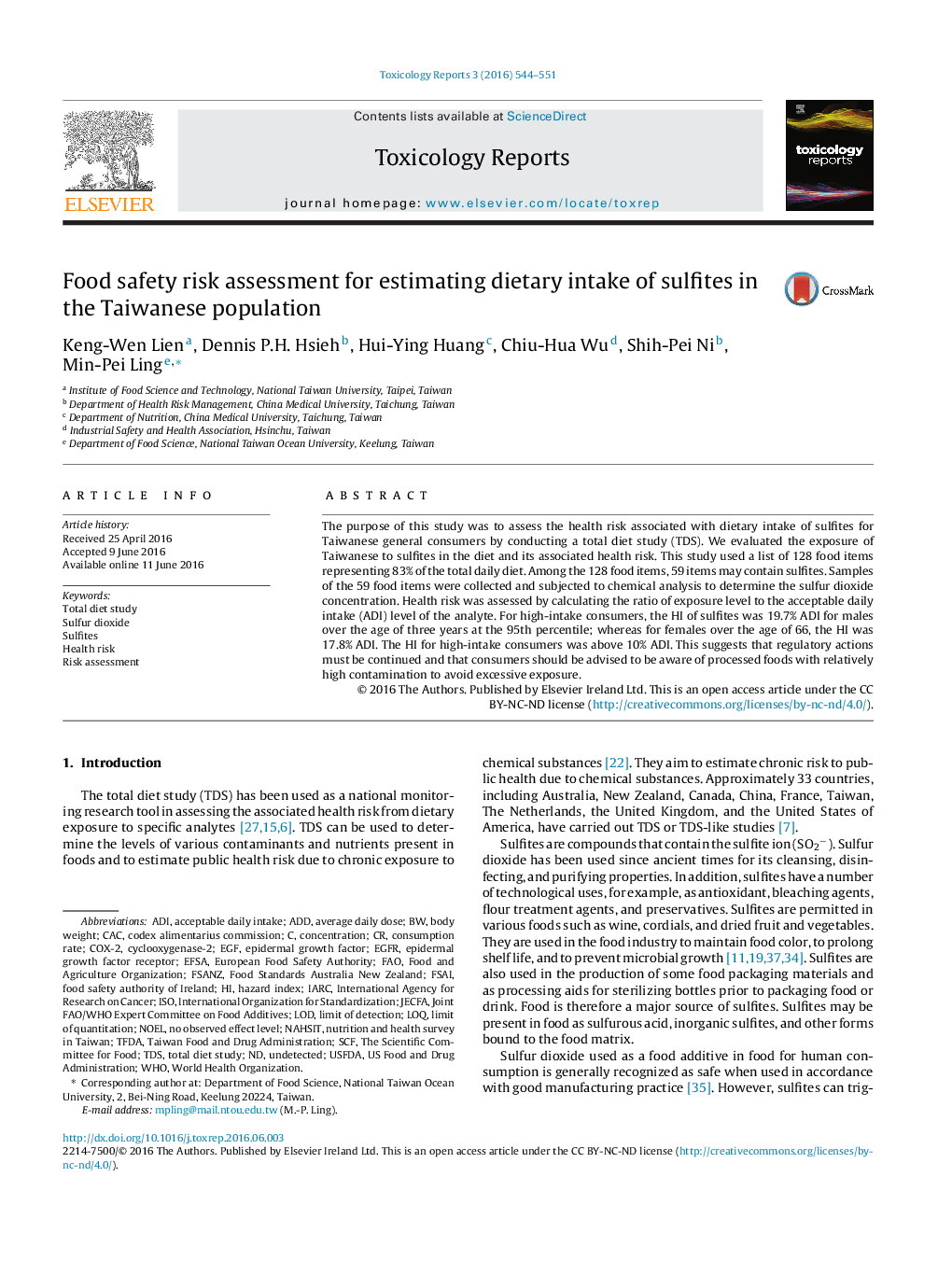| Article ID | Journal | Published Year | Pages | File Type |
|---|---|---|---|---|
| 2572163 | Toxicology Reports | 2016 | 8 Pages |
•First Taiwan TDS on estimating dietary intake of sulfites.•The detection rates for sulfur dioxide were approximately 6.2% of the total samples analyzed.•The exposure scenarios to chronic risk for 8 age group population.•The risk of use sulfites as an antioxidant or bleaching agents in the Taiwanese diet does not constitute a public health and safety concern.
The purpose of this study was to assess the health risk associated with dietary intake of sulfites for Taiwanese general consumers by conducting a total diet study (TDS). We evaluated the exposure of Taiwanese to sulfites in the diet and its associated health risk. This study used a list of 128 food items representing 83% of the total daily diet. Among the 128 food items, 59 items may contain sulfites. Samples of the 59 food items were collected and subjected to chemical analysis to determine the sulfur dioxide concentration. Health risk was assessed by calculating the ratio of exposure level to the acceptable daily intake (ADI) level of the analyte. For high-intake consumers, the HI of sulfites was 19.7% ADI for males over the age of three years at the 95th percentile; whereas for females over the age of 66, the HI was 17.8% ADI. The HI for high-intake consumers was above 10% ADI. This suggests that regulatory actions must be continued and that consumers should be advised to be aware of processed foods with relatively high contamination to avoid excessive exposure.
Graphical abstractFigure optionsDownload full-size imageDownload as PowerPoint slide
